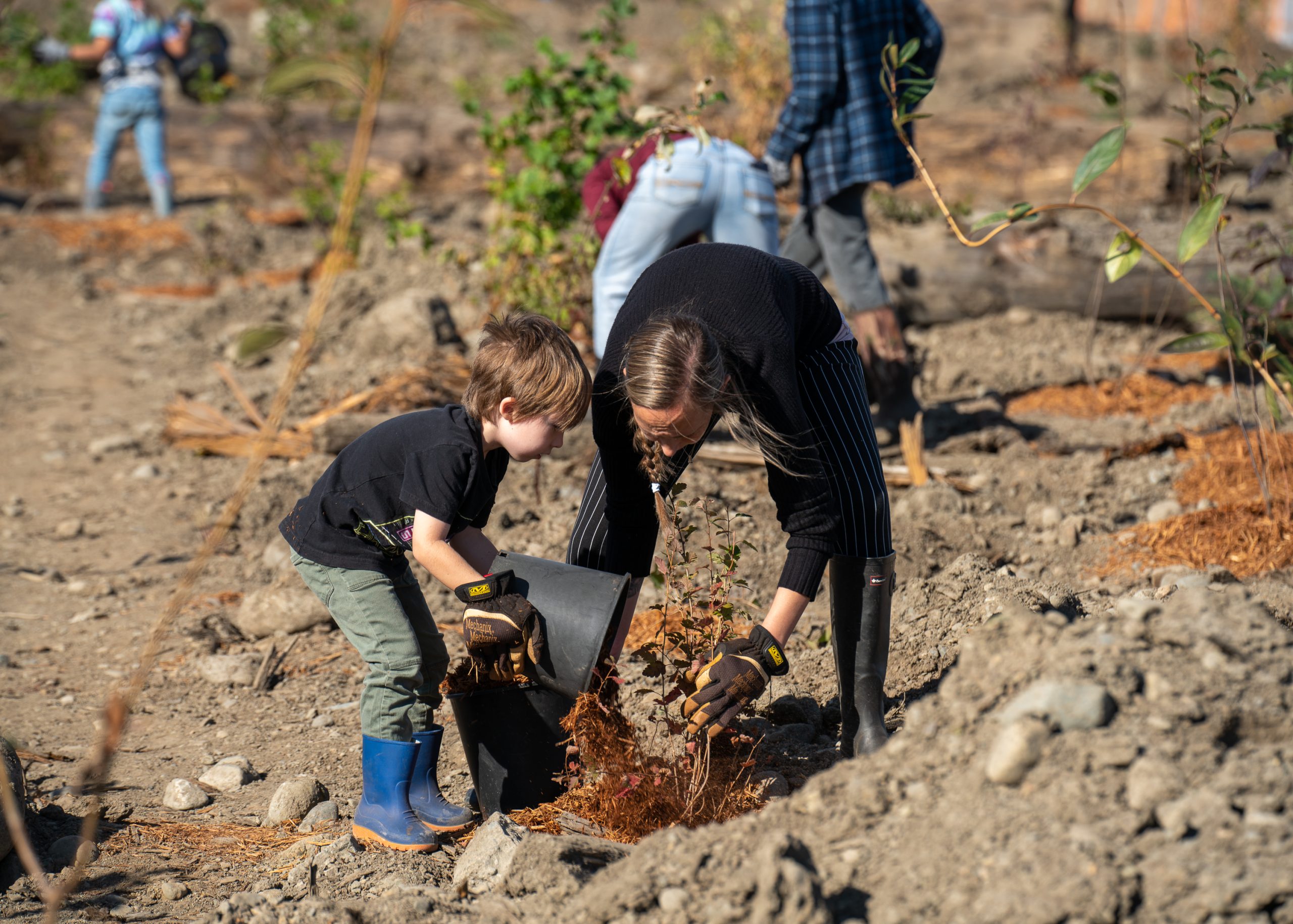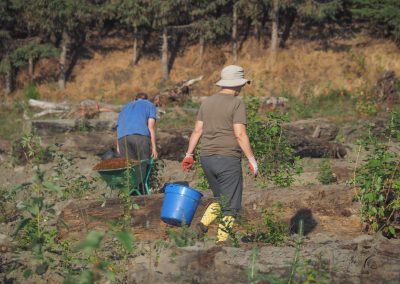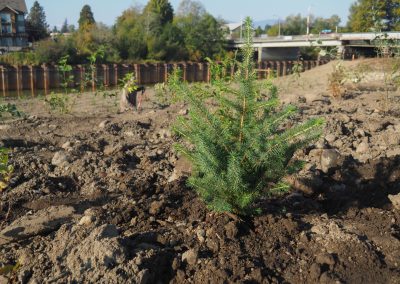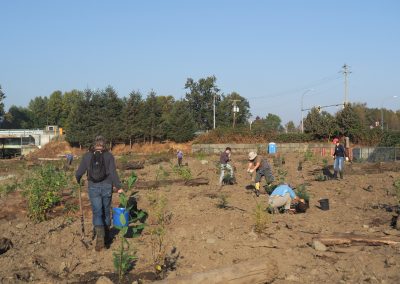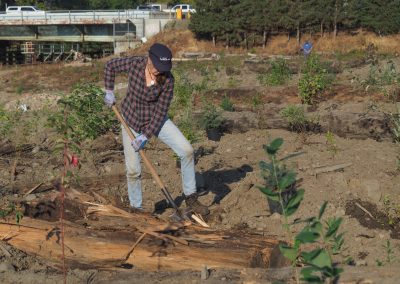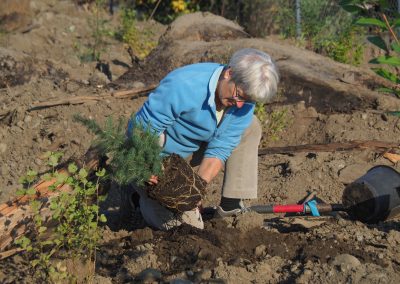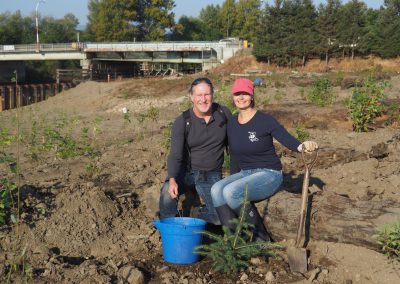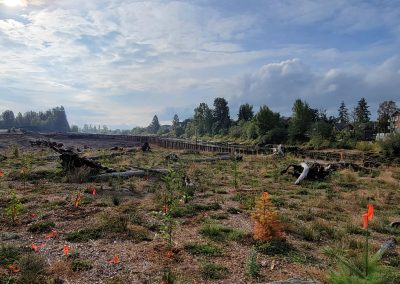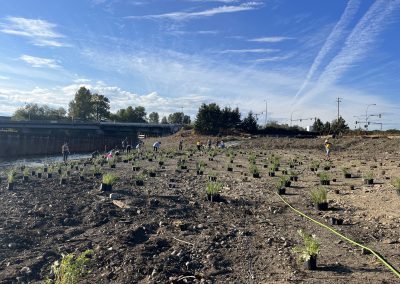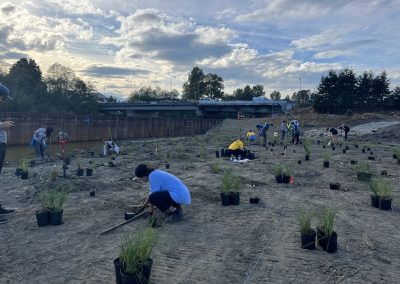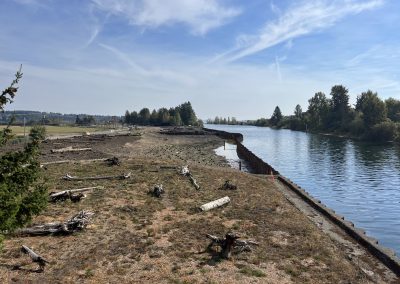Kus-kus-sum Planting Thank You
Some volunteers came out more than once to ensure we had enough hands to complete the work and everyone came to the site with a smile and can-do attitude. To us, this illustrates the importance of this project to our community and the support we have received from the very beginning back in 2017. We feel grateful and lucky to work with our community to help steward our local environment.
In addition to the adult volunteers, classes of students from Cumberland Elementary, Arden Elementary and the Partners in Education Online Learning helped to plant, water and mulch at the site throughout the year. All the classes that participated in these stewardship activities were prepped with a presentation on the K’ómoks Estuary and Kus-kus-sum project, and provided with supplementary materials for furthering and deepening their learning.
Many of the students that came out this year have been involved in the project in previous years by painting the wooden salmon for the Sponsor A Salmon fundraiser. One teacher commented “These students are gaining a unique experience by being involved firsthand as this project progresses.”
Of the plants that were planted this October 40% were upland tree and shrub species which included Sitka spruce (Picea sitchensis), hemlock (Tsuga heterophylla), Scouler’s willow (Salix scouleriana), Hooker’s willow (Salix hookeriana), snowberry (Symphoricarpos), Nootka rose (Rosa nutkana), and alder (Alnus rubra). The willows were planted along some of banks as they grow quickly and help stabilize the soil. In the area that will become inundated with water and subject to tides, we planted salt tolerant marsh species at three different elevations. The species planted at the lowest elevation included Carex lyngbyei (Lyngbye’s sedge), Juncus balticus (Baltic rush), and Glaux maritima (seaside milkwort), those planted at mid elevations included Potentilla pacifica (silverweed) and Triglochin maritima (seaside arrowgrass) and those at the highest elevation included Deschampsia cespitosa (tufted hairgrass), Symphotrichum subspicatum (Douglas aster), Sidalcea hendersonii (Henderson’s checkermallow), and Myrica gale (Sweet gale).
The Comox Valley community also remains a consistent and appreciated source of funding for this project as donations have totaled over $34,000 this year. Other funders that supported this year’s work include: Fish and Wildlife Compensation Fund, Habitat Conservation Trust Fund, Pacific Salmon Foundation, World Wildlife Fund, The Province of British Columbia, the Department of Fisheries and Oceans, and the Micah Messent Legacy Fund. A complete list of funders who have supported this initiative from the beginning can be found on our Friends of Kus-kus-sum page.
Related Posts
Fall and Winter Forage Fish Sampling
We’re gearing up for the fall/winter season of forage fish sampling!
Mallard Creek Riparian Planting
We will be planting native riparian species along a section of Mallard Creek that we recently cleared of invasive Reed canarygrass.
Fall Planting at Kus-kus-sum
We are looking for volunteers to assist us with planting native trees, shrubs, and marsh plants at Kus-kus-sum this fall!
A New Day for Forage Fish
Project Watershed and the Coastal Forage Fish Network (CFFN) are celebrating Surf Smet Day on October 25th! This adds another day on which to celebrate and raise awareness about beach spawning forage fish as Pacific sand lance are celebrated on a day in December.
Fall Work at Kus-kus-sum
We are looking for volunteers to assist us with weeding out invasive plants to make room for the native plants arriving later this fall!
Forage Fish Survey Techniques Workshop
The Coastal Forage Fish Network (CFFN) is hosting two one-day workshops to introduce development considerations and methods to survey for beach spawning forage fish for projects that may impact beach spawning forage fish.


